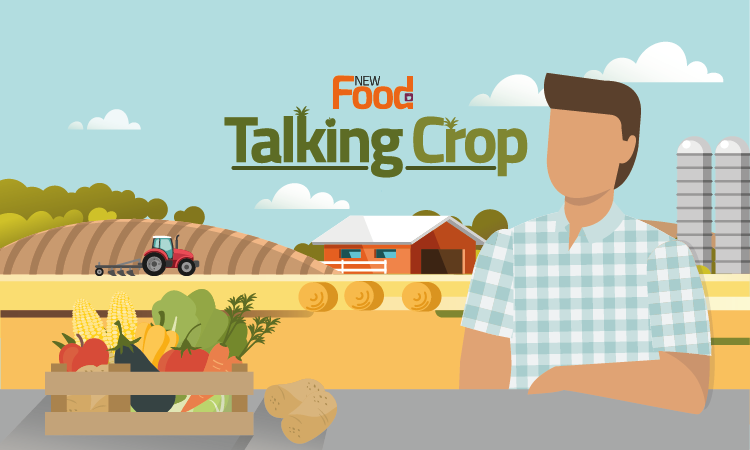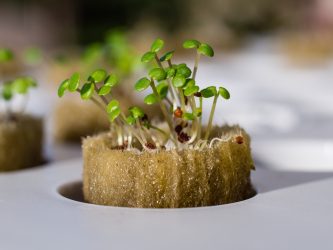Soil technologies
- Like
- Digg
- Del
- Tumblr
- VKontakte
- Buffer
- Love This
- Odnoklassniki
- Meneame
- Blogger
- Amazon
- Yahoo Mail
- Gmail
- AOL
- Newsvine
- HackerNews
- Evernote
- MySpace
- Mail.ru
- Viadeo
- Line
- Comments
- Yummly
- SMS
- Viber
- Telegram
- Subscribe
- Skype
- Facebook Messenger
- Kakao
- LiveJournal
- Yammer
- Edgar
- Fintel
- Mix
- Instapaper
- Copy Link
Posted: 12 June 2020 | Gideon Ashworth | No comments yet
In issue #2 of Talking Crop, Gideon Ashworth explores the relationship between technology selection, soil and crop quality.


There’s been a lot of focus around COVID-19’s influence on the agri-food world over the past few weeks, including the first addition of ‘Talking Crop’. So, I would like to veer away from the current crisis this month and explore where our crops come from – hopefully opening a window into soil and a selection of the many technologies associated with it.
Owing to life’s strange twists and turns, a few years ago I ended up with an agricultural-based master’s degree with the word ‘Technology’ in the title. Whilst one might assume that would make me a technological whizz, the reality is quite different. My professional comfort zone is firmly rooted (excuse the pun) in soil science and how it influences crop quality and food safety along global supply chains. The technologies that facilitate those outcomes are obvious targets of my attention. I cannot claim to be original enough in thought to be an inventor, but I do enjoy assessing the value in advancements that enable the supply of safe quality food and development areas that have the potential to enhance the scope of global food security and reduce food loss in supply chains.
Our communal industry concerns with agricultural development should balance the triangulation of the following challenges:
1) Increasing pressure on available growing land and application of appropriate agricultural practices.
2) Water management. Water is an increasingly scarce or erratic resource, with climatic fluctuations, expanding global population and intensive agriculture over-utilising water from rivers and aquifers. 1
3) The ever-increasing agricultural challenges presented by climate change.2
Focusing on quality and safety in advance is one element within loss reduction. A plethora of widely implemented technologies aid us in the assessment of quality and safety of our raw materials and shelf-ready products. However, there are existing technologies which help us to increase the quality of crops before sowing even commences.
Soil technologies
The primary consideration for any crop is the soil or substrate that it will be grown in. Technologies that have the potential to replace soil on a commercial scale include hydroponics. Hydroponic crops are grown in inert substrates, with nutrient solutions in water being offered to the roots at controlled periodic intervals or as a constant flow. The various guises of hydroponics include ebb and flow, nutrient film technique (NFT) as well as aquaponics, which combines fish farming and crop growth into one closed loop system.3


Growing watercress and herbs in hydroponic system; seed pods made of rock wool
These growing techniques require specific controls, including water temperature, pH and light intensity,4 as well as complementary technologies aiding the production of high yielding quality crops. Crucially, hydroponics offer a solution to mitigate the challenges of land use, water management5 and climate change present, with potential for urban agriculture, or utilising brown field sites and even underground facilities.6
The technology also has potential for increased pest and disease management capabilities, as well as organic growing (hydro-organics). Combine those with the advances in LED lighting and it allows us phenomenal potential for controlled crop growth in terms of nutrient density7 and for induced flower triggering for fruit set. These technologies, however, do not influence the field soil grown crops which sustain the majority of our global food supply, and which remain subject to the triangulation of land use, water use and climate change.
As with most factors in food, soil science is not one size fits all. While the textbook theories of my degrees act as a constant reminder of the bounds of the topic, it is the responsibility of the individual farmer to manage their soil according to local nuances and requirements. There are multiple variables; from microclimates, fertiliser, nutrient profiles and density, soil structure to depth of soil horizons. Furthermore, we must consider the potential influence of agricultural practice on the soil, including exposure or excess irrigation leading to leaching of nutrients from the soil, poor weed control, and inappropriate ploughing and tilling.
Responsible soil management is a key element in mitigating climate change; soils are a vital carbon store that are increasingly recognised as fundamental to the future stability of our climate.8 Therefore, soil assessment is fundamental not only for crop quality, but for encouraging climate stability. There are existing technologies which can be utilised for soil analysis, including Infrared (IR) Spectroscopy, which offers significant analytical capabilities in terms of soil fertility, organic matter, pH and heavy metals.9
Diffuse reflectance Infrared technology is employed across the food industry for multiple applications, for example at Bart Ingredients we use it for authenticity verification of our single ingredient raw materials. The debates are ongoing which spectra are the most suitable for specific uses, for example, soil analysis can use Near Infrared or Mid Infrared.10
The question over whether the instruments should be hand-held devices for user practicality, or whether individual soil samples should be sent to a laboratory for the analysis is debatable. Either way, the technology does not replace a farmer’s understanding of their land and its requirements. However, at the same time that farming migrates onto lands and taps into aquifers for irrigation, with some viable growing land becoming potentially unviable for certain crops due to desertification, catalysed by poor soil and water management. Perhaps these technologies can support longer-term strategies within the challenges of water management, land use and climate change?
The jury is still out on whether the eating quality of hydroponically grown produce meets or exceeds consumer expectations. Agri-food businesses should not overlook nor undervalue the possibility of capturing and nurturing quality and safety prior at any stage of the crop life cycle.
Gideon
References
- http://www.fao.org/land-water/water/water-scarcity/en/
- https://researchbriefings.files.parliament.uk/documents/POST-PN-0600/POST-PN-0600.pdf
- https://www.sciencedirect.com/science/article/pii/S1876610217364585
- https://ieeexplore.ieee.org/abstract/document/8229470
- https://ieeexplore.ieee.org/abstract/document/7857374
- https://www.telegraph.co.uk/news/earth/agriculture/farming/11706406/Londons-first-underground-farm-opens-in-WW2-air-raid-shelter.html
- https://www.sciencedirect.com/science/article/abs/pii/S0304423815300911
- https://www.bbc.co.uk/news/science-environment-51128709
- https://www.sciencedirect.com/science/article/pii/S0065211310070057
- https://www.sciencedirect.com/science/article/abs/pii/S0016706109001220
Related topics
Data & Automation, Environment, Equipment, Ingredients, Robotics & automation, Technology & Innovation









